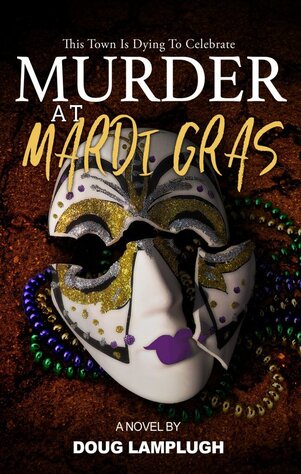In this true crime-flavored novel, Detective William Boyett is called out on Mardi Gras evening in Mobile, Alabama to investigate the discovery of a young woman’s body wrapped in a carpet in a vacant lot a few blocks from the parade route.
Over the next two months, Boyett works hard to solve the case, but he’s frustrated by miscalculations and downright incompetence by other members of the law enforcement community. His investigation goes nowhere, and when he’s promoted and transferred back into patrol, the unsolved homicide falls into the cold case status.
A decade later, Boyett is assigned to a newly formed cold case squad. He soon picks up two cases he feels he can solve, one of which is the 2006 Mobile Mardi Gras murder he left behind. Now, with skilled, trusted colleagues at his side, he picks up the trail, determined to find the murderer, never expecting the horrific truth he will uncover.
A seat-of-your-pants mystery thriller written by a thirty-year criminal investigator that you will believe is true. Doug Lamplugh brings his experiences with the criminal justice system, as well as his experience with multi-state, multi-jurisdictional investigations to life in this novel. The details of how a criminal investigation can change rapidly will astound you.
“Forget the make-believe cop dramas full of whiz-bang tech. In the real world it comes down to dogged persistence, attention to detail, and shoe leather. Murder at Mardi Gras is the real deal from a real cop … Murder at Mardi Gras should be required reading for homicide investigators and fans of police procedure.” – Mark Johnson – Retired Mobile Police Department Detective and author of “Apprehensions and Convictions: Adventures of a 50 year old Rookie Cop”
“The author spent a great deal of time researching the intricacies of homicide investigations which cover multiple jurisdictions and states. The reader gets a glimpse of the complexities, politics and egos which can impact an investigation. Ultimately, it comes down to the relationships of law enforcement officers which solves cases. This is a very realistic depiction… you feel like you are part of an actual investigation.” – Jim Ciotti-Retired Special Agent in Charge-Northern District of Ohio
Ohio Bureau of Criminal Investigation
From The Book:
“Members of the jury,” Mobile County Circuit Judge William Wellborn began his charge to the panel, “in any jury trial there are, in effect, two judges. I am one of the judges; the other is the jury. It is my duty to preside over the trial and decide what evidence is proper for your consideration. It is also my duty at the end of the trial to explain to you the rules of law that you must follow and apply in arriving at your verdict.
“First, I will give you some general instructions which apply in every case. For example, instructions about burden of proof and how to judge the believability of witnesses. Then I will give you some specific rules of law about this particular case, and finally, I will explain to you the procedures you should follow in your deliberations.”
Detective William Robert Boyett looked over at the defendant. He wondered how the man sitting twenty feet away could possibly have committed the horrific crime he was being charged with, and no one figured it out. Obviously, the fragmented criminal justice system was not working—until now.

The defendant stared straight ahead at Judge Wellborn, his face an emotionless mask as the judge continued, “You, as jurors, are the judges of the facts. But in determining what actually happened—that is, in reaching your decision as to the facts—it is your sworn duty to follow all the rules of law as I explain them to you.
“You have no right to disregard or give special attention to any one instruction, or to question the wisdom or correctness of any rule I may state to you. You must not substitute or follow your own notion or opinion as to what the law is or ought to be. It is your duty to apply the law as I explain it to you, regardless of the consequences.”
As Judge Wellborn continued, Detective Boyett’s mind began to wander back over the investigation that had brought him to this point, into this courtroom today. He thought about how the investigation had begun, and the people he’d met during the two decades.

Leave a Reply
You must be logged in to post a comment.